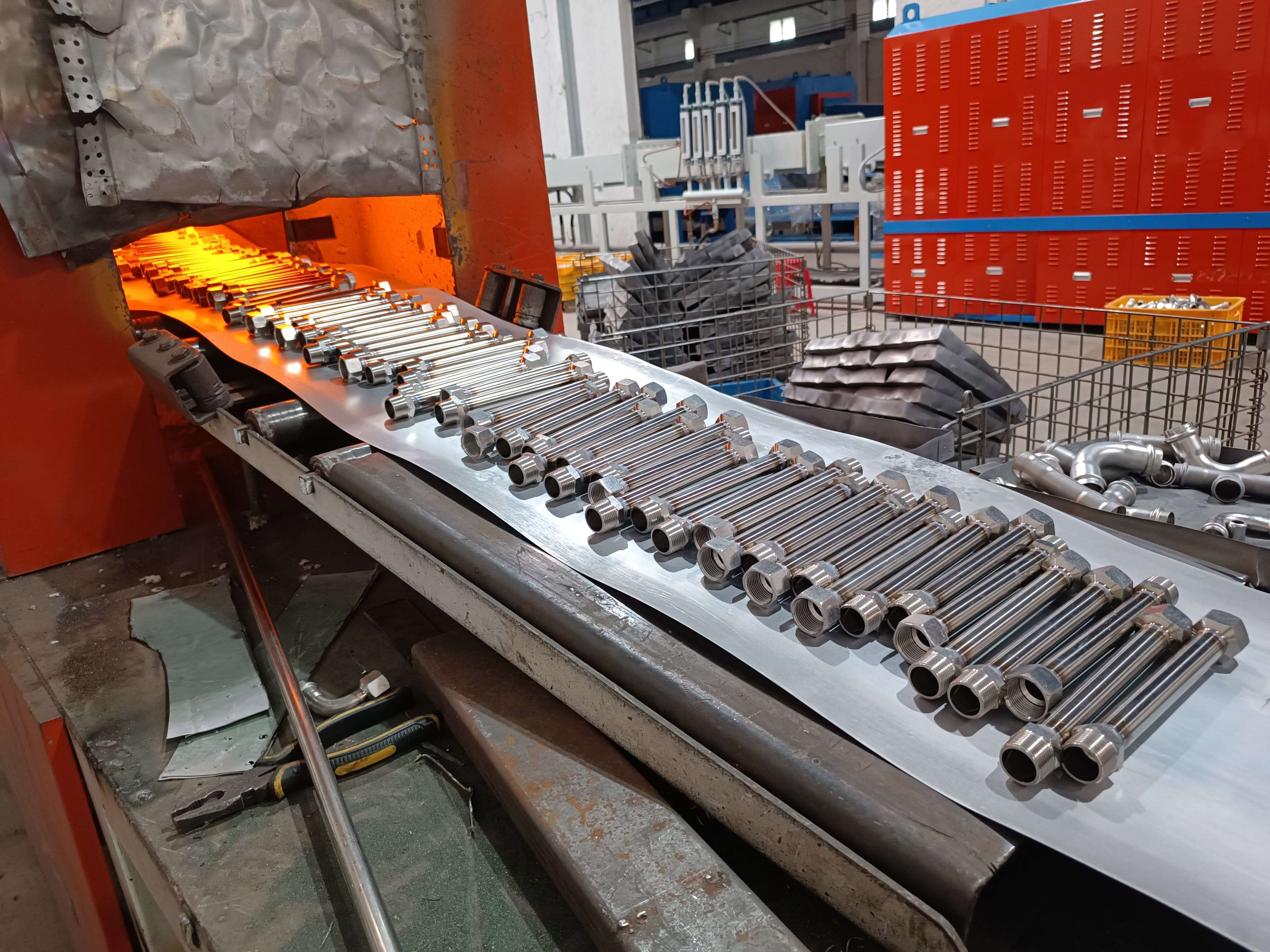Comparative Analysis of Stainless Steel Ring-Compression Fittings Before and After Annealing
May. 27, 2025
1. Core Objectives of Annealing Treatment
Annealing is a critical process in metal heat treatment, involving a heating-holding-cooling cycle to eliminate work hardening, refine grain structure, and restore material toughness. For stainless steel ring-compression fittings (e.g., press-fit pipe fittings), the primary goals of annealing are as follows:
Elimination of Cold-Working Stresses: Residual stresses generated during forming processes (e.g., stamping, bending) are reduced through annealing, mitigating the risk of cracking.
Enhancement of Plastic Deformation Capacity: Ensures uniform deformation of the fitting during ring-compression assembly, preventing localized stress concentration.
Restoration of Corrosion Resistance: Suppresses lattice distortion caused by cold working, minimizes the formation of chromium-depleted zones, and maintains the integrity of the passive oxide film.
2. Comparison of Key Performance Metrics Before and After Annealing
Performance Indicators | Before Annealing (Cold-Worked Condition | After Annealing (Solution-Annealed Condition) | Influencing Mechanism |
Hardness(HV) 220 | 280 (high strength but brittle) | 160-200 (significant softening) | Cold work hardening leads to an increase in dislocation density, and dislocations rearrange after annealing |
Elongation(%) 10 | 15% (prone to brittle fracture) | 35-45% (high ductility) | Annealing eliminates work hardening and refines grains through recrystallization |
Tensile Strength (MPa) 650 | 750 (high strength but low toughness) | 520-580 (balanced strength and toughness) | Grain boundary strengthening and dislocation slip optimization after solution annealing |
Corrosion resistance | Pitting corrosion occurs after 48-hour salt spray test | No corrosion is observed after ≥500-hour salt spray test | Annealing eliminates chromium-depleted zones and repairs the passive film |
Magnetism | Weak magnetism (due to deformation-induced martensitic transformation) | Non-magnetic (austenite structure recovery) | Annealing promotes reverse martensitic transformation, stabilizing the γ-Fe phase |
3. Conclusions and Recommendations
Mandatory Annealing Scenarios:
High-Pressure/High-Temperature/Severe Corrosion Environments (e.g., chemical processing, nuclear power)
Fluid Systems with Stringent Sealing Requirements (e.g., pharmaceutical, semiconductor manufacturing)
Simplified Annealing (Optional) Scenarios:
Ambient-Temperature, Low-Pressure Potable Water Pipelines
Temporary or Non-Critical Engineering Projects
Annealing can be deprioritized where long-term durability is not a primary concern, balancing immediate cost efficiency with potential
risks.










